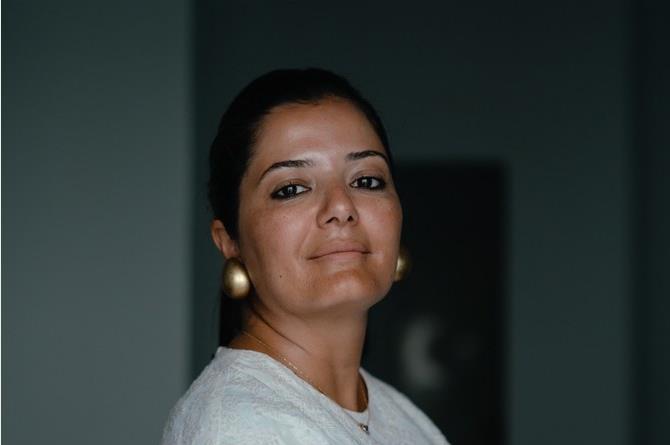
DUBAI: A new contemporary art gallery is opening later this month in Tunis with the aim of shedding light on the North African nation’s art scene, as well as creative talents from across the continent.
For the latest updates, follow us on Instagram @arabnews.lifestyle
Tunisian gallerist Selma Feriani’s eponymous space will open in vibrant downtown Tunis and is reportedly the first large-scale commercial gallery of its kind in North Africa.
Feriani also has a gallery in London and her latest opening reflects her long-time mission of fostering creativity in her home country.
“After we opened in London, I quickly realized that promoting artists from the region only from a platform in Europe was not enough,” Feriani told Arab News. “You are not close enough to what is really happening in the studios of artists from the Middle East. Importantly, you are not close enough to the stories that they are telling you. You aren’t really on the ground. This is why I decided to open another space in my home country of Tunisia.”
Feriani first established her gallery in 2013 in London followed by another space in Sidi Bou Saïd, Tunis, that same year. The space represented emerging and mid-career artists from the MENA region and internationally. It was housed in a 1960’s former convent and Feriani has now transformed the space into a house where guests of the gallery, including artists and curators, stay.
Selma Feriani’s new purpose-built space in the rapidly growing Tunis Lake district becomes the gallery’s primary, much larger address. The space was designed by Tunisian architect Chacha Atallah and features three sleekly devised exhibition rooms, a basement space for projections, performances and talks, a mezzanine exhibition platform and one exhibition room with 6.5-meter-high ceilings to showcase large-scale artworks. Other rooms include a reading room and a bookshop. Encircling the space is a recreational garden, complete with indigenous fruit trees, that will display one sculptural commission each year.
Selma Feriani’s new purpose-built space in the rapidly growing Tunis Lake district becomes the gallery’s primary, much larger address. (Photo by Jellel Gasteli)
“After a decade representing artists from the MENA region and beyond in Tunis, London, and on the global art fair circuit, our artists’ ambitions and needs have grown,” said Feriani in a statement. “Now we must grow with them. Our largest exhibition space is 200sqm with 6.5m high ceilings, opening greater opportunities for larger scale, site-specific commissions.”
The new gallery, emphasizes Feriani, “opens fresh possibilities of displaying and contextualizing art that makes it relevant and accessible to contemporary audiences.
“This is a project that showcases our steadfast commitment to providing a dynamic platform for contemporary art in North Africa,” she told Arab News.
The gallery’s inaugural exhibition will feature a solo show of new visual artworks by Paris-based Tunisian artist Nidhal Chamekh. (Supplied)
The gallery’s inaugural exhibition will feature a solo show of new visual artworks by Paris-based Tunisian artist Nidhal Chamekh, many of which he produced as part of the gallery’s own residency program.
Titled “Et si Carthage.../ And what if Carthage...” the exhibition will occupy all three exhibition halls and is inspired by a poem by French Martinican writer and theoretician Édouard Glissant.
Glissant’s poem and Chamekh’s new works explore the Roman occupation of Carthage in 146BC and the rumor that the Romans destroyed Carthage with black salt. When the Romans stormed the city, they completely sacked it, enslaving and killing much of its population.
The poem considers what might have occurred in Carthage had the destruction never taken place.
The exhibition runs from Jan. 25-April 7 and is curated by Paris-based Kathryn Weir with the assistance of curator Salma Kossemtini.
Through her presence in North Africa, Feriani also wants to work more with artists from the rest of the continent. In 2025 she will stage an exhibition of works by renowned Ghanaian artist Ibrahim Mahama.
“Some consider Tunisia to be more Mediterranean than Africa, but we are located on the African continent,” she said. “A lot of debates center around this fact, particularly surrounding issues with migrants coming from Africa.
“I believe through art we can tackle these issues,” she said.
“Art,” she said, “offers a way to bring people together and enhance cultural dialogue. Art, I believe, still offers a way to respond to the crises of the world.”












